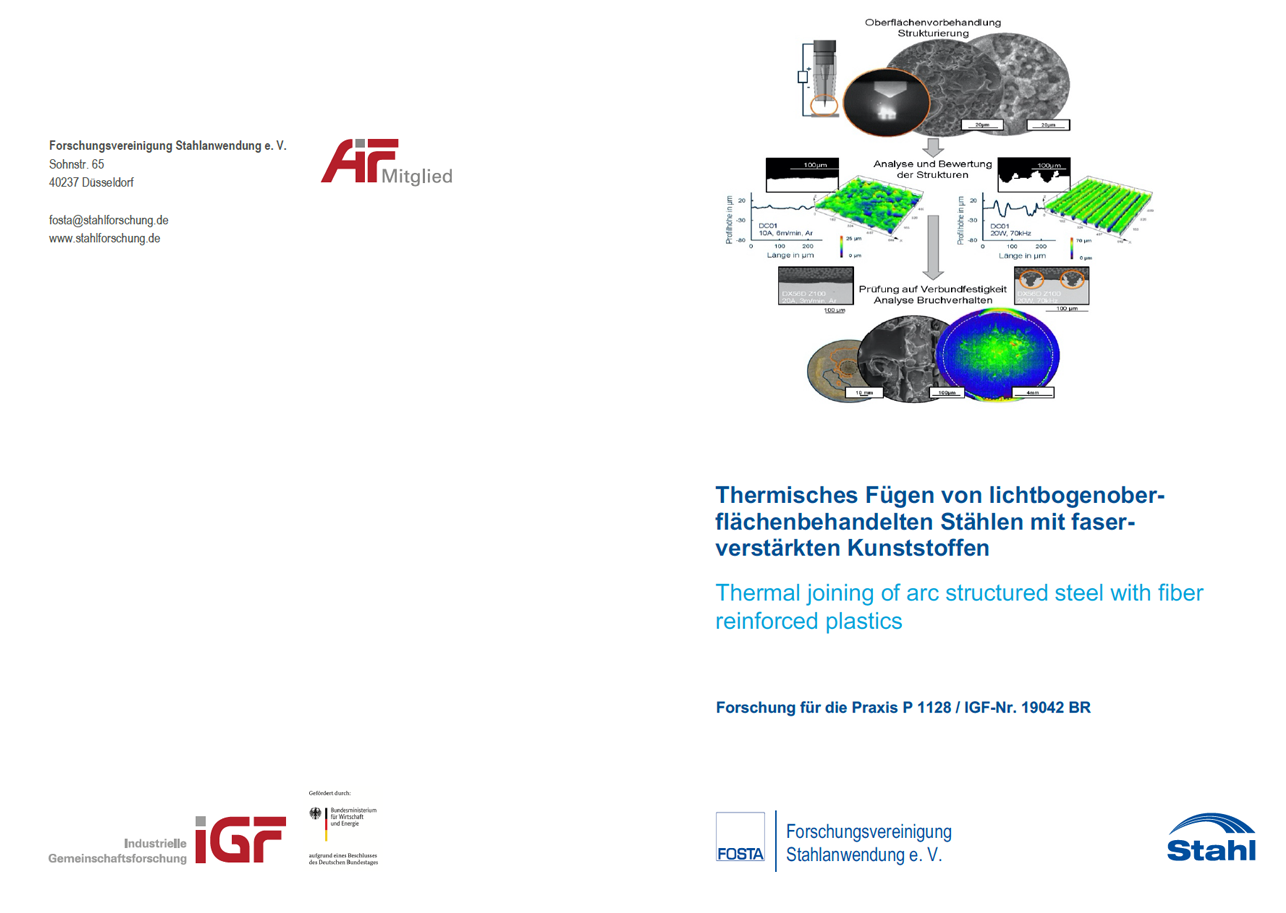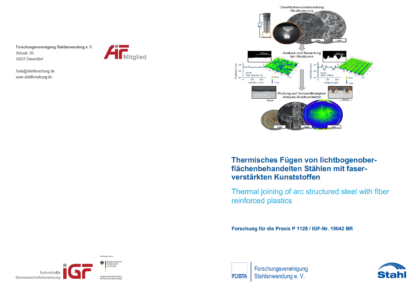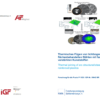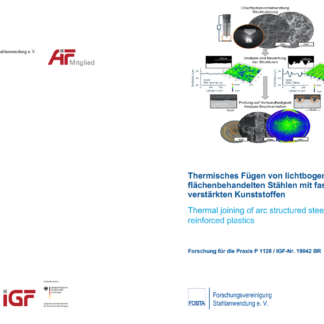Description
P 1128 – Thermal joining of arc structured steel with fiber reinforced plastics
In order to make full use of the lightweight construction potential of steel, adapted joining processes have to be developed, whereby the joining of steel with fibre reinforced plastics is of particular interest. So far, mainly mechanical joining and bonding have been used.
Thermal joining, however, offers clear advantages over these methods. In order to be able to use it with sufficient adhesive strength, the adhesion between metal and plastic need to be ensured reproducibly. This requires a suitable temperature-time control of the process as well as a suitable roughening of the metallic joining surface. Within the scope of this project, the joining temperature is adjusted over time by means of a laser and the surface texturing is produced by means of an anodically poled TIG process. The achievable adhesion values are investigated and compared with reference samples, which were structured by laser.
The aim of the project was to structure metallic surfaces using conventional arc technology. The surface-treated metals are used to produce hybrid metal-plastic compounds. As a reference to the arc structure, laser structures were generated in continuous wave (cw) and pulse mode. The focus of the investigations was the characterisation of the generated structures with regard to their topographical and energetic properties and their effects on the wetting and the resulting fracture behaviour.
The investigations were initially carried out on model point tests to determine the one tensile strength for different material pairs. Subsequently, the results were transferred to industry-oriented joining geometries (linear tests). In addition to the materials mentioned above, fibrereinforced thermoplastics were used. The knowledge gained is to contribute to the current research into new joining processes for hybrid material composites.
The process parameter analysis for the creation of laser structured surfaces in pulsed as well as in cw-laser operation shows clear differences in the achievable structural shapes.
Using the cw process, mainly deep structures can be produced. The number of passes is decisive for the geometry of the resulting structural pattern. From a number of crossings of i = 2, a drop-shaped structuring is created, which has undercuts. By means of pulsed laser radiation, wide, flat structures can be produced by low pulse frequencies (f = 20 kHz). With increasing pulse frequency (f = 60 – 70 kHz) drop-shaped structures can be produced due to the pressure that occurs.
Published in:
January 2021
Authors:
M.Sc. M.-L. Solf, Dr.-Ing. K. Schricker, Univ.-Prof. Dr.-Ing. habil. J. P. Bergmann, Dipl.-Ing. M. Lohse, Dr.-Ing. M. Hertel, Prof. Dr.-Ing. habil. U. Füssel




